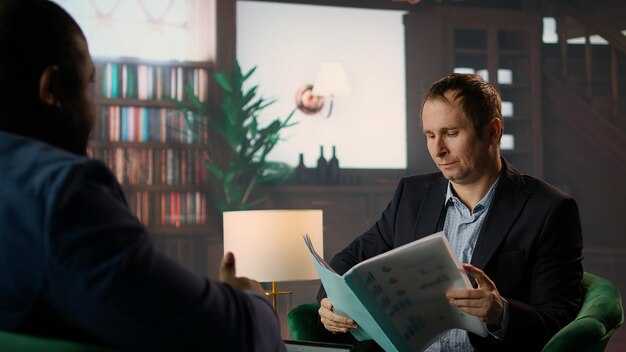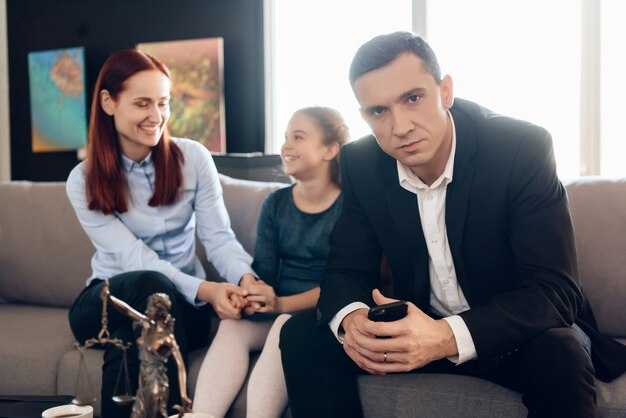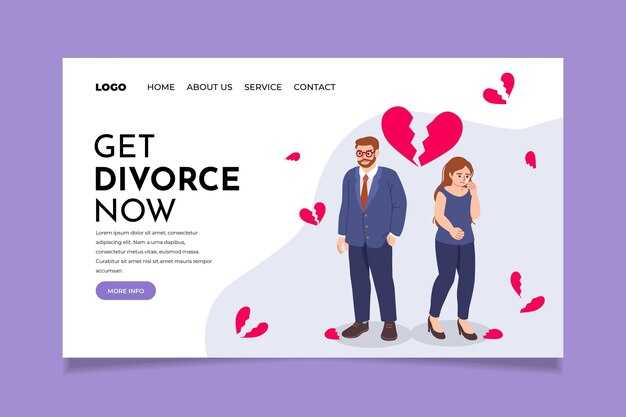Self-differentiation means being authentically yourself and not absorbing the emotional noise or “wifi” coming from others. The more you can remain true to yourself while staying connected, the more emotionally mature and composed you become. Today I’m interviewing a fellow creator on YouTube, Jerry Wise. We became friends through his work as a family-systems coach. He brings extensive training in counseling and marriage and family therapy, and now he uses YouTube to show people how to disentangle from the pull, the invisible family “wifi,” the shared ethos and the nervous-system reactivity of their family of origin. It’s my pleasure to welcome Jerry Wise. Hi Jerry — it’s wonderful to see you. I’m really intrigued by your perspective on family. Many people discuss family dynamics, but you frame something distinctive, that thing you called the family’s “super-self,” right? The family super-self. Exactly — especially in dysfunctional families, everyone seems to be hooked into this shared family self. Instead of separate selves, there’s this collective family identity. That tendency is part of being human; family systems have evolutionary and empirical roots. Our nervous systems attune to one another — that’s the essence of family systems theory. We are intimately connected; as humans we’re animals with both lower and higher brain functions, and this nervous-system coupling is real. Just as a herd of horses shifts as one or a flock of birds turns in unison, the family-origin “wifi” keeps operating. If I can interrupt that circuit — break that “wifi” — I begin to emerge more fully as my true self. Doing so also alleviates symptoms and lessens many problems, including traumatic effects. That chronic anxiety you talk about — I love how you address anxiety and fears — it resonates deeply for me because it often underlies everything. From a family-systems standpoint, much of what drives people is partly unconscious and partly conscious, a mix of both. Small shifts in that system can produce dramatic improvements: greater calm, reduced reactivity, and less triggering of old wounds and trauma. That’s why I’ve found this approach so useful; it helped me after I tried many different methods. Tell me about your background. You speak like someone who’s experienced trauma as well. Yes. I grew up feeling isolated in a reactive, superficially independent family. There was physical abuse, and I endured sexual abuse — not perpetrated by family members, but it still shaped how my family responded. The common advice I got was simply “stay away from them,” which as a kid felt hollow and unhelpful. That forced sexual experience was deeply traumatic, and I empathize with women who endure similar violations — men often find it harder to acknowledge sexual abuse because of the stigma and the unfair reactions like “Why did you let it happen?” I’ve carried my own trauma and tried many routes to heal, to break free from codependency and the enmeshment I had with my mother. I learned the hard way that physical separation doesn’t automatically produce emotional separation. Sometimes no-contact is necessary, but distance alone does not equal emotional detachment. My family’s patterns kept operating inside me constantly. Murray Bowen, the father of family therapy, noticed something similar when he hospitalized people with schizophrenia along with their families for extended periods. He observed that the illness shifted depending on the family’s level of enmeshment: more enmeshment meant worse psychosis; greater healthy differentiation meant less. Why would that be? Enmeshment generates chronic, high anxiety. Every family carries some baseline anxiety, but healthy families tend to keep it much lower and less disruptive. In dysfunctional families, anxiety runs higher and is transmitted across generations. That’s why it’s not always productive simply to blame parents — they acted from their own histories and norms. My father, for example, used to resort to corporal punishment, but he ultimately stopped that behavior — even as a school principal he ceased paddling students, which I’m grateful for. With this intergenerational inheritance, we are deeply the product of our family and vice versa. When you layer personal trauma — say sexual or physical abuse — on top of that inherited family anxiety, you end up with both acute trauma responses and that underlying chronic family anxiety. In my work I aim to address both: if someone has complex trauma or CPTSD, they may benefit from re-regulation approaches, and they’ll also gain from addressing the family’s chronic anxious patterns that form part of their inheritance regardless of whether they experienced specific traumatic events. That’s where my focus on differentiation — family differentiation — comes in. So how do you actually do that?

Self-differentiation means remaining yourself without absorbing or being pulled into other people’s toxic emotions or “family Wi‑Fi.” Bowen described it simply as being who you are while staying emotionally connected. The idea is: the more you can be yourself and remain in contact, the more emotionally mature and composed you become. That doesn’t mean you must become best friends with an openly abusive, malignant narcissistic parent — Bowen isn’t advocating that. Rather, he’s pointing out that if you’re in a family system, your healing is tied up with that system and the way you operate within it, even now, whether you fully notice that or not.
Think of the extremes: some respond to a dysfunctional parent with total rejection — “I hate them. I’ll never be like them. My dad was an alcoholic; I’ll never drink and I’ll teach everyone the evils of alcohol, and I won’t speak to them ever again.” That swing from one extreme to another is still unhealthy. Bowen argued the healthy place is the 90-degree position: a middle ground of self-differentiation. That’s where you grow, establish inner boundaries (detachment), and live authentically. A common practical starting point for many is to identify and shed the pseudo-self — the roles and reactions that aren’t truly theirs. People often say, “I don’t know who I am,” and a useful remedy is: let’s get rid of who you’re not. Remove those borrowed responses and the real you will begin to emerge.
When families operate like a cult — the “family cult” or the family super‑self — certain patterns will be obvious. One is shame and guilt. Many people have carried heavy burdens of shame and guilt, and some will deny it, but it’s common. Decisions are often driven not by “Is this what I want?” but by “Which choice will minimize guilt?” A lot of that guilt isn’t authentically yours; it’s part of the pseudo-self — the role you were taught to play so the family can function. Parents can become excellent shapers of that shame. For example, my mother, even in her late 80s living in a nursing home with her faculties intact but mobility problems, would interject criticisms suddenly. We’d be engrossed in a separate conversation and she’d interrupt: “Jerry, when are you going to get a haircut?” I’d been cutting my own hair for years, but she treated me like a child. Parents often struggle to relinquish the parent role, and while I understand that, I’m not telling my 60‑year‑old son when to get a haircut.
When she made that remark, something in me pinged — an ignition of chronic anxiety that runs in the family — and I’d react: “Mom, I wish you wouldn’t keep bringing up my haircut.” That response, however, doesn’t change the dynamic. She becomes anxious about my hair; others might judge me for it; she signals her anxiety; I get upset and confront her. That pattern is just a reenactment — a recapitulation — and nothing meaningful has shifted. It may look like change because I’m less passive and more assertive, but being a Viking (angry) instead of a victim (submissive) are simply two sides of the same problematic coin.
A more differentiated response would be regulated and calm: “Mom, I don’t know why that comment came up. I don’t see a reason to discuss it. Can we return to our conversation? If you keep bringing up my haircut, I’ll see less of you.” That communicates a boundary without erupting. It acknowledges each person’s tendencies — “I know how you are, and I know how I am” — and asks for mutual responsibility. With my sons in their early 20s, I’ve been learning to let them be themselves and to pick up subtler signals from them. They often say, in their way, “I’ve got this,” and sometimes they don’t, but the growing trust is helpful.
There’s also the tendency to be overly concerned with how others view one’s parenting. I’ve seen that, and I’ve owned up publicly: the one time I really lost my temper with my kids was when I felt ashamed about how I appeared to others as a mother. I had fear — the family language was fear — that neighbors or other parents would think I was a terrible mother because we were late or disorganized. When I snapped at my kids over shoes because we were late three days in a row, I later told them, “I’m sorry. When I lose my temper, that’s on me.” I explained I was working on it, asked their forgiveness, and they appreciated the honesty. Being a divorced mother and juggling things meant I carried a lot of shame. Once I even dropped my son off wearing Thomas the Tank Engine underwear velcroed to his jacket and rushed out the door — those chaotic moments leave marks and take time to unpack.
For others, a parent’s “being themselves” might have been truly disruptive — for example, coming home high and unclothed — and that creates injury and social consequences (no kids allowed over, humiliation, etc.). That’s where distinguishing between healthy authenticity and destructive behavior matters. I might argue that some of those dramatic behaviors are still expressions of a pseudo-self rather than genuine integration, but either way, the child often internalizes shame, and it can take years to unpick who is responsible for what.
Another dynamic is gaslighting: a family member insists an event never happened or flips the facts, and over time the victim doubts their reality. Sometimes the gaslighting seems believed by the aggressors themselves; it’s not always deliberate cruelty but can become a family narrative. A related pattern is “not noticing” — overlooking problems that are obvious in hindsight. I once had a client who made a poor and unethical business decision that hurt his family. He genuinely didn’t understand why he had acted that way. When I asked where he’d learned to “not notice,” he realized this was a pattern, taught and reinforced in his family: “Don’t notice Dad’s alcoholism,” “Don’t see that,” “Act like it’s not happening.” Denial is an imprecise word for this phenomenon; it has many subtle and creepy facets. Sometimes people see something terrible and later act as if they never saw it, as if a veil descended and erased the awareness. That shutting‑down can be generational, transmitted across years, and it helps explain why otherwise well‑intentioned people repeat poor choices — they’ve been trained not to see.
I’m fascinated by the social psychology behind this collective blindness. Occasionally it erupts into the open. For example, in one high school community where I grew up or where peers stayed, there were numerous sexual relationships between students and teachers that went unaddressed for years. Those teenagers were damaged — taught that feelings or expectations didn’t matter, that adult contact was transactional — and after movements like #MeToo, it came out again that abuse had been widespread in that school. How can so many cases be hidden? Institutions from churches to youth organizations to schools can create environments where a veil of willful ignorance falls, and it takes a lot of complicity to keep it in place. The Diocese of Chicago, for instance, later disclosed thousands of additional cases; how does a system hide even one, let alone thousands, without someone blowing the whistle? Mass denial or delusion seems to be at work.
So the central question becomes: how do individuals — and societies — awaken from that collective blindness and refuse to participate when they can help it? How do we practice seeing? How do we become people who notice and act rather than those who let the veil drop and pretend nothing is wrong?
I began by talking about the need to become self-differentiated because enmeshment and emotional fusion hide the denial — when you separate yourself from another person, a lot of things suddenly become visible and clearer. I used to serve as a priest and then a bishop, and at one point we held a council of bishops where we discussed a horrific situation: a deacon in one parish had been molesting his own children and, I suspect, a few other children in the congregation. The bishops met and, rather than confront the crime, they wanted to sweep it under the rug. I’ve seen the same pattern in the Catholic Church: “Let’s keep this quiet.” Someone even suggested, “Can we just take those families into your parish to get them away from this church?” — essentially trying to solve it by relocating people, a so‑called geographical cure. I pushed back and said, “No.” The board members I worked with weren’t stupid or morally depraved; they were good people. So how did they arrive at that choice? I realized they were acting from the same primitive family patterns that had been taught to them in their families of origin. Their consciences were there, but their emotional wiring pulled them in another direction. Gaining some self-differentiation helped me stop worrying about what everyone else would think — about the reputation of the church or its leadership — because when you’re enmeshed, that fear rules you. Differentiation should free you from that, but many people simply never develop it. Where do people learn differentiation? Ideally in institutions like churches, but too often churches intensify enmeshment by emphasizing cohesion: “We’re one body; stick together; give your money; believe what we tell you.” Community is valuable, but you can’t have true connection without separateness — intimacy requires distance and differentiation. If everyone is indistinguishably fused, you don’t have intimacy; you have crowding. Churches often encourage the sameness rather than emotional independence, and if most congregants already come from overly enmeshed families, the institution just amplifies the problem. This issue goes beyond religious settings — there’s a broader cultural overvaluation of community and crowdsourcing. I grew up around Berkeley’s counterculture and saw how the idea that community alone solves everything is overrated. You still need a moral compass and a sense of right and wrong to remain steady when those around you are spiraling. Recovery demands a certain level of differentiation, too. When someone heals and steps out of the family’s agreed dysfunction, people who remain stuck often resent them. They interpret change as judgment: “You think you’re better than us.” That resistance can lead to rejection. My own family reacted that way when I began recovery: when I first joined Al‑Anon — the program for friends and family of alcoholics — they scoffed, mocked California therapy culture, and dismissed it. Yet I saw the reality: many in my family were on a destructive path, and I wanted to find help. Finding practices and daily routines transformed me out of suicidal depression and lit a fire under me. I wanted to share that light, to show others what worked. I hoped my family would be thrilled, though I knew better. An older brother tried the daily practice I introduced to him, but he later died of an overdose; when I cleared his apartment, I found the 12‑step work I’d encouraged him to try. More recently, after my stepfather’s death, my siblings and I cleaned out layers of hoarded belongings from his house — we found untouched mail and even dead rodents under piles of paper dating back decades. On his bed, though, lay my book, filled with pages where he had recorded his fears and resentments. In the end, he had tried. That was powerful for me: even though many family members never apologized, some small gestures of change surfaced, and I was reminded that healing can’t hinge on their approval. You can’t let your recovery depend on them changing. What I teach is fundamentally about moving your emotional and mental location in the family system. Changing yourself pushes against the system because we’re so interconnected; people who remain enmeshed often try to pull you back into the shared misery. Part of the work is resisting their resistance and holding your ground. If someone asked for practical steps to begin self‑differentiation, I’d point to my online course, The Road to Self, and to a free training I offer called Building a Self You Were Never Allowed to Have. The program outlines specific steps to help you see the family system clearly: how it operates, what your role is within it, and how those patterns repeat across your other relationships. Once you can observe how you function inside the system, you leap forward in discovering your authentic self. Learning to detach is a core skill — but first you have to recognize enmeshment itself. Enmeshment shows up every time you go home for holidays and instantly regress into a childlike role: everyone starts parenting you, repeating patterns from 25 years ago, and you don’t feel like an adult. That invisible pull remains even when you’re physically away; you may tell yourself you’re grown, but you continue to behave as if you’re still trapped in your old family position. My work helps people interrupt that connection so they can become themselves. Another focus is dismantling the pseudo‑self — which is the false identity most of us carry for decades. Up until my early thirties, much of what I thought of as “me” was a pseudo‑self. I couldn’t even clearly state my genuine preferences beyond trivial things like chocolate versus vanilla ice cream. The work is about putting on “systems glasses,” noticing the layers that aren’t authentic, and slowly peeling them away. When someone makes a critical comment — “I don’t like your hair” or “That haircut doesn’t flatter you” — it can trigger you because you’ve been emotionally overclose to that person and have given away your power. In therapy, if a client told me, “Jerry, you’re the worst therapist in the world; my wife and I have had so many fights since our last session,” with a solid degree of self‑differentiation I could respond calmly: “You might be right, but here’s what’s happening: I have clear inner boundaries now and I’m not enmeshed with your wife the way I used to be. She can’t pull me into the old puppet‑strings dynamic.” Cutting those strings doesn’t make you less compassionate; in many cases it allows you to be more genuinely compassionate and present as an adult. You can still care deeply, but you won’t be hijacked by reactive, enmeshed patterns. A small side question that came up was how I ended up on YouTube. It wasn’t because I look like Brad Pitt or because I’m naturally brilliant on camera. I wanted to give back what saved me. After losing almost everything, a director at a counseling center where I worked encouraged me to share my ideas online; he was already making videos. I’d been trained in traditional, office‑based therapy where public videos felt inappropriate, and perfectionism held me back — “What if I say the wrong thing? What if people in the comments are savage?” But I decided that anything worth doing is worth doing poorly at first, so I started imperfectly and kept going. If nobody had listened, fine — I still would have been doing the thing I felt called to do. Fortunately, people did start to listen. When asked where to find me, the simplest approach is to search my name, Jerry Wise, which will pull up my profiles. I also said it’s “officially jerry relationshipsystems.com.” I have a YouTube channel and presences on Instagram and TikTok; searching Jerry Wise will usually get you to the right places. Finally, the interview wrapped with thanks — and a note that links to my material would appear in the description below.














